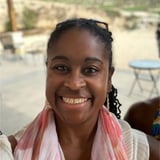Summary
Starting DesignOps at an org feels exciting and daunting at the same time. People who’ve given you the green light are as excited as you - so there’s a bit of pressure to make this work well! In this talk, Michelle will provide a “starter kit” of 10 tips for beginning a DesignOps program—the 10 foundational things she's learned from establishing DesignOps at her org. Michelle includes how to prepare the program, manage expectations, ensure your success, and keep things sustainable for the long term.
Key Insights
-
•
Centralizing design ops responsibilities can alleviate decision fatigue among design managers and increase focus on operational initiatives.
-
•
Explicitly defining who makes decisions and who provides feedback prevents unclear expectations and supports smoother project execution.
-
•
Communicating design ops work frequently and across varied formats builds understanding and trust in an often ambiguous practice.
-
•
Starting with small pilots before scaling allows room for iteration and reduces risk when introducing new processes org-wide.
-
•
Maintaining a public and collaboratively editable backlog helps manage expectations, prioritize effectively, and capture emergent ideas.
-
•
Creating reusable templates and frameworks accelerates workflows and standardizes communication of complex operational concepts.
-
•
Regular one-on-one meetings with key stakeholders foster open communication lines critical for driving horizontal change.
-
•
Balancing urgent ad hoc work with longer-term goals requires careful prioritization techniques like story pointing and breaking tasks down.
-
•
Design ops responsibilities typically cover horizontal initiatives affecting multiple teams, while design managers handle team-specific operations.
-
•
Celebrating team wins strengthens relationships and encourages adoption of new processes during times of frequent organizational change.
Notable Quotes
"Everyone was doing a little bit of design ops here and there, which created a lot of gray area around decision making."
"Organic decision making doesn’t always work for high stakes efforts because design ops initiatives are often horizontal and require alignment."
"Communicate as much as possible and in different formats, because different formats resonate differently with people."
"Pilots give you flexibility to mess up and figure out answers as you go, instead of needing all answers upfront."
"A backlog helps pace and define the design ops practice, managing what’s in scope and what’s aspirational."
"Templates don’t have to be masterpieces; even simple reusable checklists and diagrams can save time and effort."
"As a design ops manager, I try to alleviate decision fatigue for design managers so they can focus on the decisions that need their input."
"I’ve found that being approachable and providing space for Q&A helps build trust and confidence in the design ops practice."
"Design ops is a lot of change management, and asking people to change again requires appreciation and celebrating wins."
"My prior experience as a tour manager helped me operationalize and mobilize teams, anticipating risks and preparing for everything."
Or choose a question:
















More Videos

"There is overlap between design and research when it comes to different types of research; it’s not a strict divide."
Prayag NarulaHow to Empower Your Designers to Do Good Research – And Why You Want To
June 10, 2022

"Does communal proximity guarantee the right to engage in research? This is a complicated question without easy answers."
Sahibzada MayedThe Politics of Radical Research: A Manifesto
March 27, 2023

"Sponsor sessions may require registration by email to prevent Zoom bombings and protect session integrity."
Bria Alexander Louis RosenfeldWelcome
January 8, 2024

"Ways to reduce extraction in research is by embedding community-led practices rather than holding the keys to knowledge ourselves."
Sarah FathallahLessening the Research Burden on Vulnerable Communities
March 30, 2020

"It is your job to design systems and processes that work for all people."
Spencer L. A. StultzWhy Social Justice Frameworks are Necessary for Successful DEI/JEDI Initiatives
October 4, 2023

"The biggest mistake in communication is the illusion that it has happened."
Janaki KumarInnovate with Purpose
June 14, 2018

"Injecting a culture of agile iteration sets the precedent that things can and will change as the team learns."
Stefanie OwensOptimizing for Outcomes: Transformation Design in Systems at Scale
December 4, 2024

"Profit making and shareholder value have been a huge part of the problem if we want a sustainable world."
Christian BasonExpand—Rethinking Design for Public Challenges
September 14, 2022

"Visuals from DALL·E didn’t work well; I asked multiple times to remove cables but they still appeared."
Yulya Besplemennova[Demo] Stress-testing GenAI in user research synthesis
June 4, 2024
















